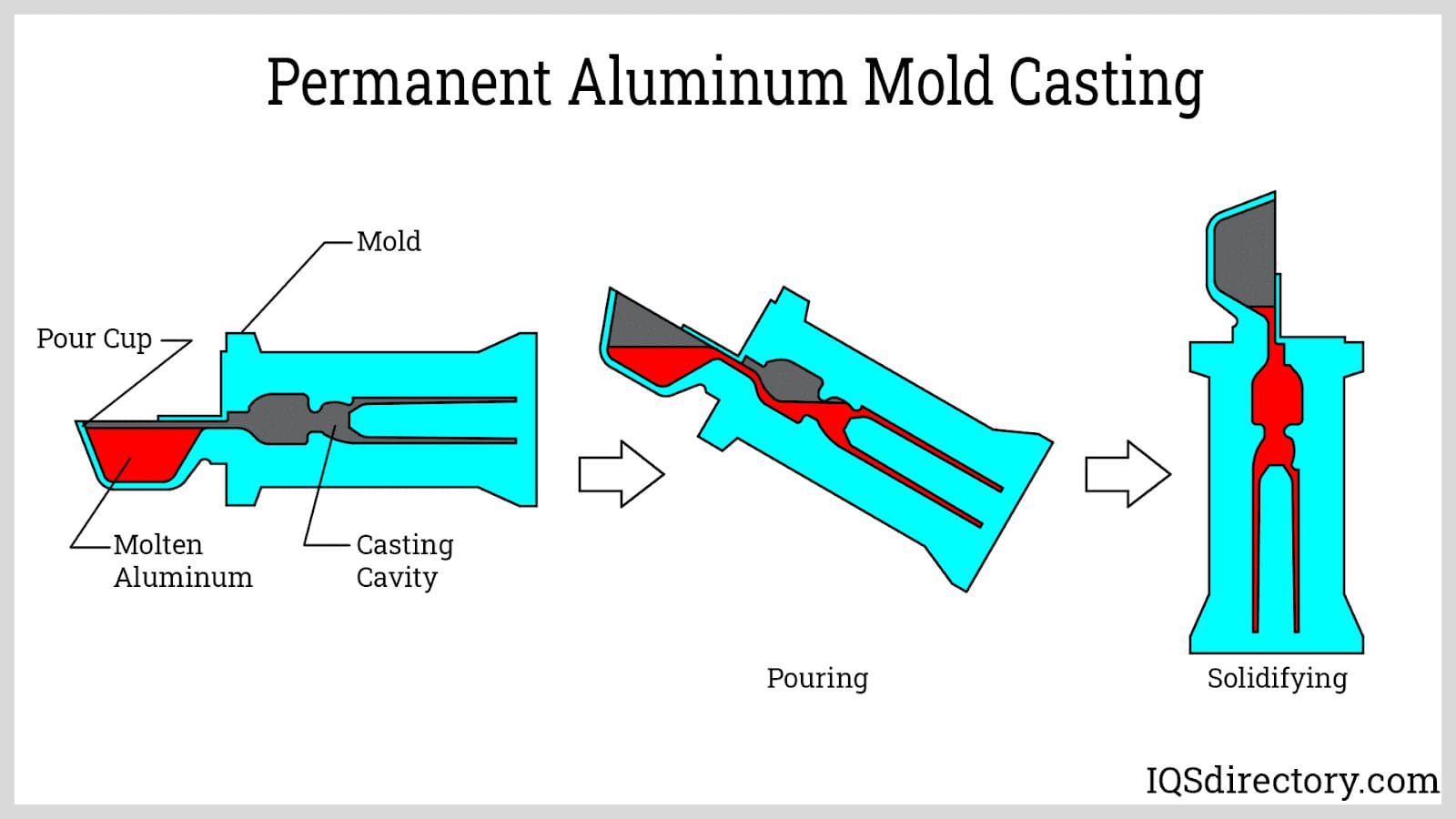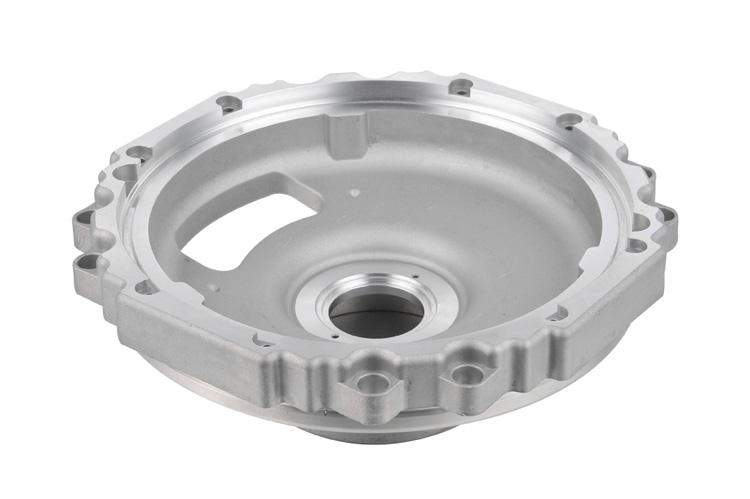Checking Out the Versatile Utilizes and Applications of Light Weight Aluminum Castings in Modern Industries
Aluminum spreadings have actually come to be indispensable to numerous modern-day sectors as a result of their one-of-a-kind residential or commercial properties. They use significant advantages in weight reduction, thermal conductivity, and deterioration resistance. From auto developments to applications in durable goods and building, their flexibility is remarkable. Yet, truth degree of their influence extends beyond prompt advantages, hinting at broader implications for sustainability and efficiency. What exists ahead for light weight aluminum spreadings in an ever-evolving industrial landscape?
Automotive Market Innovations
The automobile industry has significantly welcomed aluminum castings to enhance lorry efficiency and efficiency. By making use of aluminum, manufacturers can generate lighter elements, which contribute to boosted fuel economy and decreased emissions. Trick applications consist of engine blocks, transmission situations, and architectural parts, where the product's strength-to-weight ratio provides longevity without including excess weight.
Light weight aluminum castings likewise offer remarkable thermal conductivity, which aids in much better heat dissipation, therefore improving engine efficiency. Furthermore, innovations in casting innovations, such as die spreading and sand casting, make it possible for the manufacturing of intricate geometries, permitting cutting-edge designs that enhance room and performance.
The recyclability of aluminum aligns with sustainability goals in the auto sector, advertising eco-friendly methods. As the market proceeds to introduce, making use of aluminum castings is likely to broaden, driving more advancements in vehicle style and effectiveness.
Aerospace Advancements and applications
While the aerospace industry continues to prioritize weight reduction and gas performance, light weight aluminum castings have become an important material choice for numerous applications. Their lightweight nature, coupled with high strength-to-weight ratios, enables substantial improvements in airplane efficiency and effectiveness. Light weight aluminum castings are commonly used in structural components, such as fuselage frameworks and wing parts, where decreasing weight is necessary.
Current improvements in light weight aluminum casting modern technologies, consisting of enhanced alloy formulations and accuracy spreading methods, have better improved the material's efficiency abilities. These innovations allow the manufacturing of complicated geometries and elaborate layouts while preserving structural stability. Additionally, light weight aluminum's exceptional corrosion resistance warranties durability and reliability in harsh aerospace atmospheres.
As the aerospace sector significantly embraces sustainability, light weight aluminum spreadings use a recyclable remedy that aligns with environmentally friendly methods, making them a pivotal aspect in the growth of next-generation aircraft.
Durable Goods and Everyday Products
As consumers increasingly look for lightweight yet sturdy materials for day-to-day products, light weight aluminum spreadings have gotten popularity in different customer goods. The special residential properties of aluminum, including its resistance to rust and superb thermal conductivity, make it a perfect option for products like cookware, home devices, and exterior gear. Aluminum cast pots and pans provide even warmth distribution, boosting cooking effectiveness. Furthermore, the usage of light weight aluminum in items such as bicycle frames and luggage ensures a balance between stamina and mobility. Suppliers value light weight aluminum spreadings for their convenience, as they can be conveniently molded right into complex forms while keeping architectural honesty. The capability to recycle aluminum without degrading its residential or commercial properties aligns with growing consumer choices for sustainable products. Overall, light weight aluminum spreadings are important to the production of resilient, functional, and aesthetically pleasing consumer items, satisfying the demands of modern way of livings.
Building And Construction and Architectural Uses
Aluminum spreadings have become an essential part in building and construction and architectural style, particularly as a result of their toughness and light-weight nature. These properties make light weight aluminum a perfect choice for different applications, consisting of structural aspects, facades, and ornamental features - Aluminum Castings. Building contractors and engineers significantly use aluminum spreadings for window frameworks, doors, and roof, boosting both performance and aesthetic appeals. The material's resistance to rust better prolongs its life-span, decreasing maintenance expenses and ensuring toughness in diverse environmental problems
Moreover, aluminum can be quickly molded right into intricate designs, permitting for innovative architectural expressions. Its adaptability promotes the creation of customized items that fulfill particular style demands, from luxuriant barriers to complex supports. As sustainability becomes a concern, aluminum's recyclability includes in its allure in green construction methods. On the whole, aluminum spreadings are revolutionizing the building market by supplying lightweight, resilient, and aesthetically enticing remedies.
Electric and Digital Components
Aluminum castings play a vital function in the production of lightweight electrical enclosures, which boost mobility and effectiveness in different applications. Additionally, their outstanding thermal conductivity makes them optimal for warm sinks, guaranteeing peak performance and durability of electronic components. Aluminum's conductive residential or commercial properties add to its use in numerous electrical conductors, stressing its value in contemporary innovation.
Lightweight Electric Units
Light-weight electric enclosures play a necessary duty in shielding delicate digital components from ecological elements and physical damage. Built from light weight aluminum castings, these units are valued for their strength-to-weight ratio, making them ideal for numerous applications across markets. Their lightweight nature help in minimizing overall system weight, which is crucial in mobile and mobile electronics. Additionally, aluminum's rust resistance enhances durability, prolonging the lifespan of the enclosed parts. The ability to mold light weight aluminum into complicated forms allows for personalized layouts, satisfying certain needs while guaranteeing efficient warmth dissipation. In addition, these units can be conveniently incorporated into existing systems, supplying adaptability and flexibility in modern technical atmospheres. Overall, lightweight light weight aluminum units considerably add to the performance of electronic devices.
Warm Sinks and Conductors
While many products are made use of in electronic elements, light weight aluminum spreadings attract attention for their effectiveness in heat management as heat sinks and conductors. Their excellent thermal conductivity More Help permits effective warm dissipation, which is crucial in protecting against the getting too hot of digital tools. Light weight aluminum's light-weight nature further enhances its suitability for applications where weight is a significant factor, such as in aerospace and automotive industries. Additionally, aluminum spreadings can be conveniently formed into intricate forms, supplying style flexibility for optimizing thermal performance. The corrosion resistance of light weight aluminum also adds to the longevity and reliability of these components in various environments. As innovation developments and gadgets end up being much more compact, the need for efficient warm management remedies, like light weight aluminum castings, remains to expand.
Marine Market Usage
The marine market progressively relies upon light weight aluminum spreadings for their extraordinary resilience and rust resistance. These homes make aluminum an ideal selection for different applications, consisting of boat hulls, engine components, and aquatic hardware. The light-weight nature of aluminum spreadings allows boosted fuel efficiency and much easier maneuverability in boat, which is vital for both business and leisure vessels.

Light weight aluminum spreadings also provide substantial expense advantages because of their long life-span and low upkeep requirements, decreasing the total operational expenditures for marine drivers. Furthermore, the convenience of aluminum enables intricate layouts that can meet details performance needs.
Suppliers in the aquatic market use innovative spreading strategies to create complex forms, making certain that components fulfill strenuous safety and performance criteria. As the need for high-performance marine vessels grows, light weight aluminum castings are positioned as a vital material in improving the functionality and durability of marine equipment.
Sustainability and Recycling in Aluminum Spreading

Light Weight Aluminum Recycling Process
Recycling light weight aluminum plays an important duty in minimizing website link environmental influence and conserving sources within the casting industry. The aluminum recycling procedure begins with the collection of scrap light weight aluminum, which can include old components, producing waste, and post-consumer products. This scrap is then sorted, cleansed, and shredded into tiny items to assist in melting.
As soon as prepared, the aluminum scrap is melted in a furnace at lower temperature levels than primary light weight aluminum production, greatly decreasing power usage. The molten light weight aluminum is after that cast into ingots or various other forms for reuse in different applications - Metal Castings. This closed-loop system enables for the efficient recovery of aluminum, preserving its properties while minimizing the requirement for virgin materials. As a result, the recycling process is a vital part of lasting techniques in light weight aluminum try this site spreading
Environmental Benefits
While aluminum casting plays an important role in various industries, its ecological benefits are specifically amazing relating to sustainability and resource preservation. The light-weight nature of aluminum adds to energy performance in transportation, lowering fuel intake and discharges. Additionally, aluminum casting facilitates the usage of recycled materials, considerably reducing the power required for production compared to main light weight aluminum. This recycling procedure decreases waste and lessens the ecological influence related to mining and refining basic materials. Aluminum is 100% recyclable without deterioration of its properties, promoting a sustainable lifecycle. By choosing aluminum casting, industries can considerably minimize their carbon footprint while promoting source performance, making it an important selection in the search of ecologically friendly production practices.
Closed-Loop Equipments

Frequently Asked Concerns
What Are the Key Advantages of Aluminum Castings Over Other Products?
Light weight aluminum castings provide light-weight residential or commercial properties, superb corrosion resistance, and high strength-to-weight proportions. They can be quickly molded into complicated shapes, supply great thermal and electrical conductivity, and are economical, making them preferable over numerous different products.
How Is the Light Weight Aluminum Spreading Process Eco-friendly?
The light weight aluminum spreading process is eco-friendly due to its recyclability, reduced energy intake, and decreased waste production. Its capability to utilize recycled materials decreases the carbon footprint, promoting sustainability within producing methods.
What Prevail Obstacles in Light Weight Aluminum Spreading Production?
Common challenges in aluminum casting production consist of keeping dimensional accuracy, taking care of thermal contraction, stopping problems like porosity and inclusions, ensuring appropriate mold and mildew design, and maximizing production performance while reducing material waste and ecological influence.
Exactly How Do Light Weight Aluminum Castings Contrast in Cost With Other Manufacturing Approaches?
Light weight aluminum spreadings typically offer affordable costs compared to other producing approaches, particularly for medium to high-volume production. Their lower initial tooling expenses and efficient material usage can cause positive business economics gradually.
What Future Patterns Are Expected in Aluminum Casting Innovation?
Future trends in light weight aluminum spreading innovation are prepared for to consist of innovations in automation, enhanced alloy structures, enhanced reusing approaches, and the combination of 3D printing, all aimed at increasing performance, minimizing expenses, and minimizing ecological impact.
Current improvements in aluminum spreading modern technologies, including enhanced alloy formulations and precision spreading methods, have actually even more boosted the material's efficiency abilities. Light weight aluminum castings have come to be a necessary component in building and architectural design, particularly due to their stamina and light-weight nature. The light weight aluminum recycling process starts with the collection of scrap aluminum, which can consist of old components, making waste, and post-consumer items. Once prepared, the light weight aluminum scrap is melted in a heater at reduced temperature levels than key aluminum production, considerably minimizing energy usage. Furthermore, light weight aluminum casting helps with the use of recycled materials, significantly reducing the energy needed for manufacturing contrasted to main aluminum.